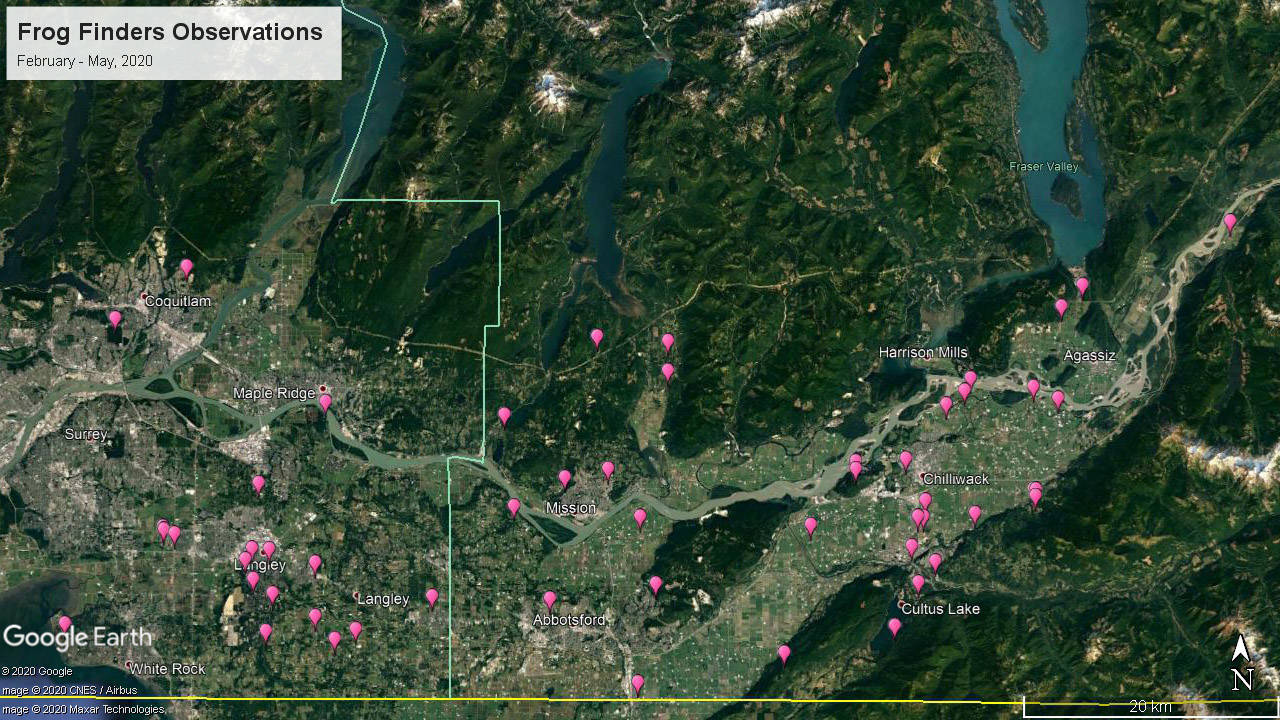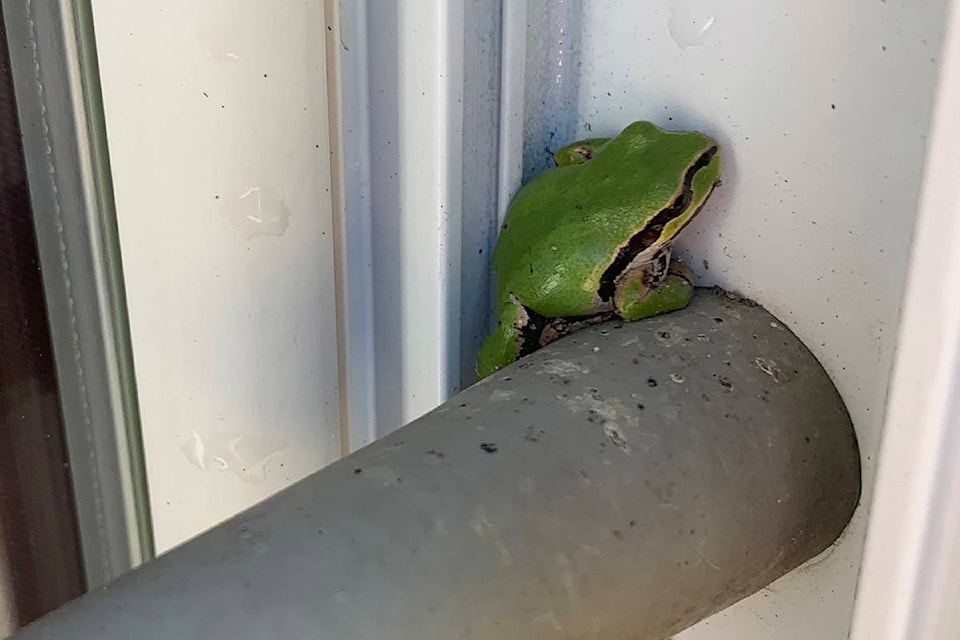If you’ve ever been in a marsh-filled area after the sun goes down, you’ve likely heard the song of the Northern Pacific treefrog.
It can be almost deafening, as they sing their chorus. It’s the one that resembles fingers running over a tight comb. It’s a familiar sound to those who live along the sloughs in Chilliwack, and begins once they come back to life each spring.
But actually spotting the elusive, little amphibians is not as common, and so this year the Fraser Valley Conservancy’s Frog Finders program set out to track where they’re living. Their aim is to track them before they become yet another frog species at risk.
The Progress shared the conservancy’s study in March, which asks the public to help them track frog sightings.
READ MORE: Fraser Valley Conservancy seeks frog finders from Langley to Hope
The night we first heard them in our yard, in early May, we threw open all the windows in amazement. We live just on the edge of the city, but in the dark that night we may as well have been in B.C.’s most remote hinterland. As they sang, and we stood on the porch and took it all in. It lasted for hours.
I remembered the study, and wondered if these were indeed the treefrogs. And then days later, one came to visit us.
My eye caught a bright dash of green while I was watering plants.
Upon closer inspection, I found this tiny, bright frog clinging to our sliding glass door, hiding in the door jamb behind the door stopper. She was smaller than the tip of my thumb. Black and yellow striping ran from her nose to behind her feet.
“There’s a frog on the porch!” was all I had to say for my family to come running.
By then the hot sun was bearing down. The metal frame, glass door and even the air was hot. And the little frog looked dry.
We took photos, and consulted the internet. We launched a mini ‘save the frog’ campaign, spritzing water down the door jamb to give it some moisture and cool the metal. We pushed a tall chair against the door and placed a planter for it to see and hop into, and a small dish with water for a little drink.
We watched. We waited. She breathed. We smiled. I went to the Fraser Valley Conservancy’s website and submitted all the data, including a photo. And then just like that, our little treefrog was gone.
But the conservancy has responded to our data, and shared some back with us. That includes a map of all the sightings from people just like us, from the Salish Sea to Hope. Our frog is one of 50 pink dots on that map (see below).
Aleesha Switzer, a project biologist with the Fraser Valley Conservancy, confirmed our sighting.
“The photo you submitted was indeed a Northern Pacific Treefrog, the little guys who make the chorus at night,” she said. “What a great picture! Those sticky toe pads allow them to climb a sliding glass door no problem, which is probably how he ended up the door frame like that. Silly little frog.”
Indeed.
She added that our submissions and others like it help them do their work.
“The attached Update Map reveals just how widespread these observations are and how many important areas there are for amphibians right in our backyard,” she said. “Your observation helps us to understand where we should prioritize conservation efforts in the Fraser Valley.”
As the spring carries on, we’ve also heard the ominous sound of the invasive bull frogs. They move through the grass, croaking along their way. And they gobble up the treefrogs like popcorn. Meanwhile, our chorus in our backyard is dimming, week by week.
It all underlines the importance of tracking frog activity, and we can’t wait for our next sighting.
LEARN MORE:
If you haven’t heard or seen a Pacific treefrog, or want to learn more, there are plenty of other ways to interact with the conservancy.
Switzer suggests visiting their website for more resources, including identification guides, at https://fraservalleyconservancy.ca/stewardship/, where you will also find a link to sign up for their mailing list to hear about their Nature Stewardship School installments. This is also where you can submit a frog sighting.
READ MORE:Budding biologists sought to wade through waterways over spring break
@CHWKcommunity
jpeters@theprogress.com
Like us on Facebook and follow us on Twitter.
Want to support local journalism during the pandemic? Make a donation here.

